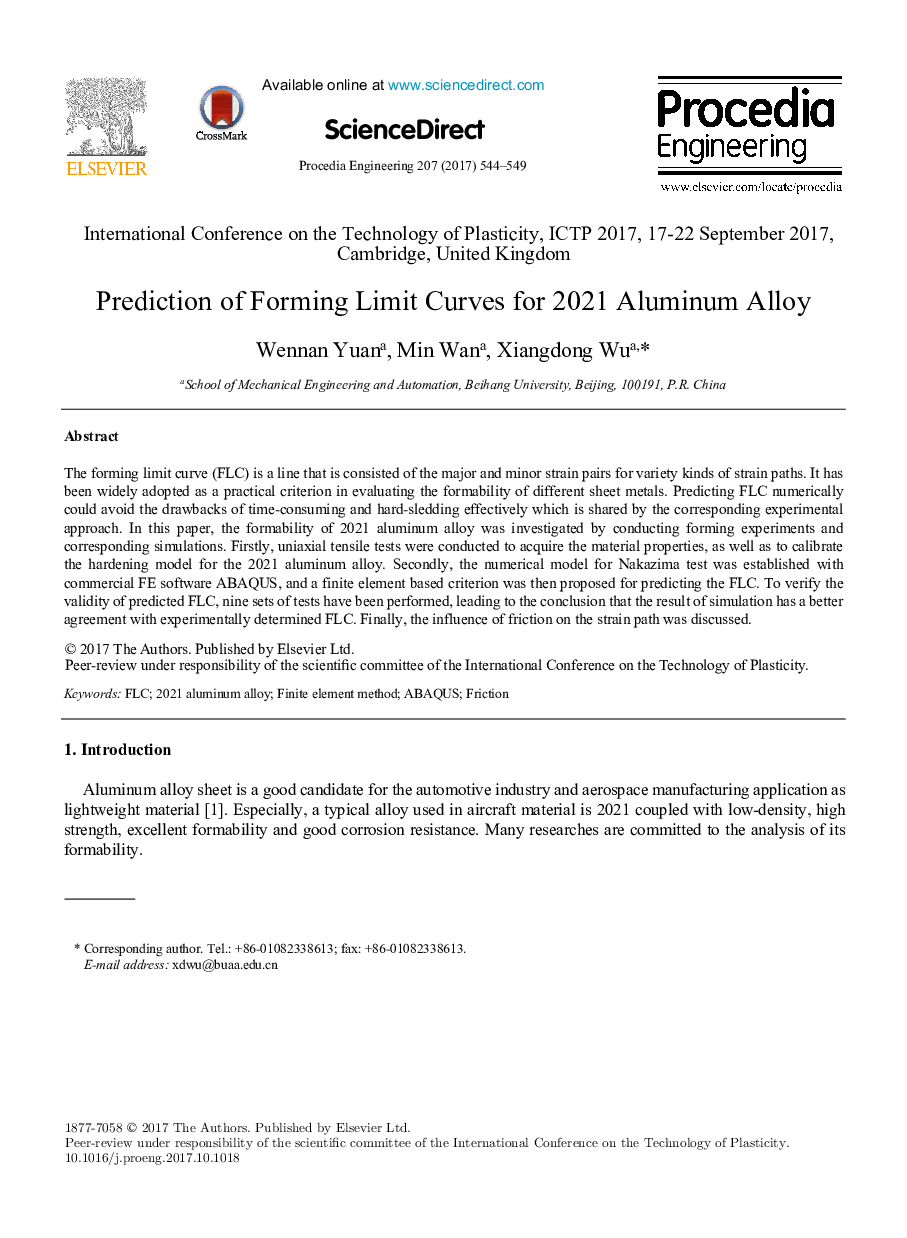| کد مقاله | کد نشریه | سال انتشار | مقاله انگلیسی | نسخه تمام متن |
|---|---|---|---|---|
| 7227258 | 1470619 | 2017 | 6 صفحه PDF | دانلود رایگان |
عنوان انگلیسی مقاله ISI
Prediction of Forming Limit Curves for 2021 Aluminum Alloy
ترجمه فارسی عنوان
پیش بینی شکل گیری منحنی های محدود برای آلومینیوم 2021
دانلود مقاله + سفارش ترجمه
دانلود مقاله ISI انگلیسی
رایگان برای ایرانیان
موضوعات مرتبط
مهندسی و علوم پایه
سایر رشته های مهندسی
مهندسی (عمومی)
چکیده انگلیسی
The forming limit curve (FLC) is a line that is consisted of the major and minor strain pairs for variety kinds of strain paths. It has been widely adopted as a practical criterion in evaluating the formability of different sheet metals. Predicting FLC numerically could avoid the drawbacks of time-consuming and hard-sledding effectively which is shared by the corresponding experimental approach. In this paper, the formability of 2021 aluminum alloy was investigated by conducting forming experiments and corresponding simulations. Firstly, uniaxial tensile tests were conducted to acquire the material properties, as well as to calibrate the hardening model for the 2021 aluminum alloy. Secondly, the numerical model for Nakazima test was established with commercial FE software ABAQUS, and a finite element based criterion was then proposed for predicting the FLC. To verify the validity of predicted FLC, nine sets of tests have been performed, leading to the conclusion that the result of simulation has a better agreement with experimentally determined FLC. Finally, the influence of friction on the strain path was discussed.
ناشر
Database: Elsevier - ScienceDirect (ساینس دایرکت)
Journal: Procedia Engineering - Volume 207, 2017, Pages 544-549
Journal: Procedia Engineering - Volume 207, 2017, Pages 544-549
نویسندگان
Wennan Yuan, Min Wan, Xiangdong Wu,
